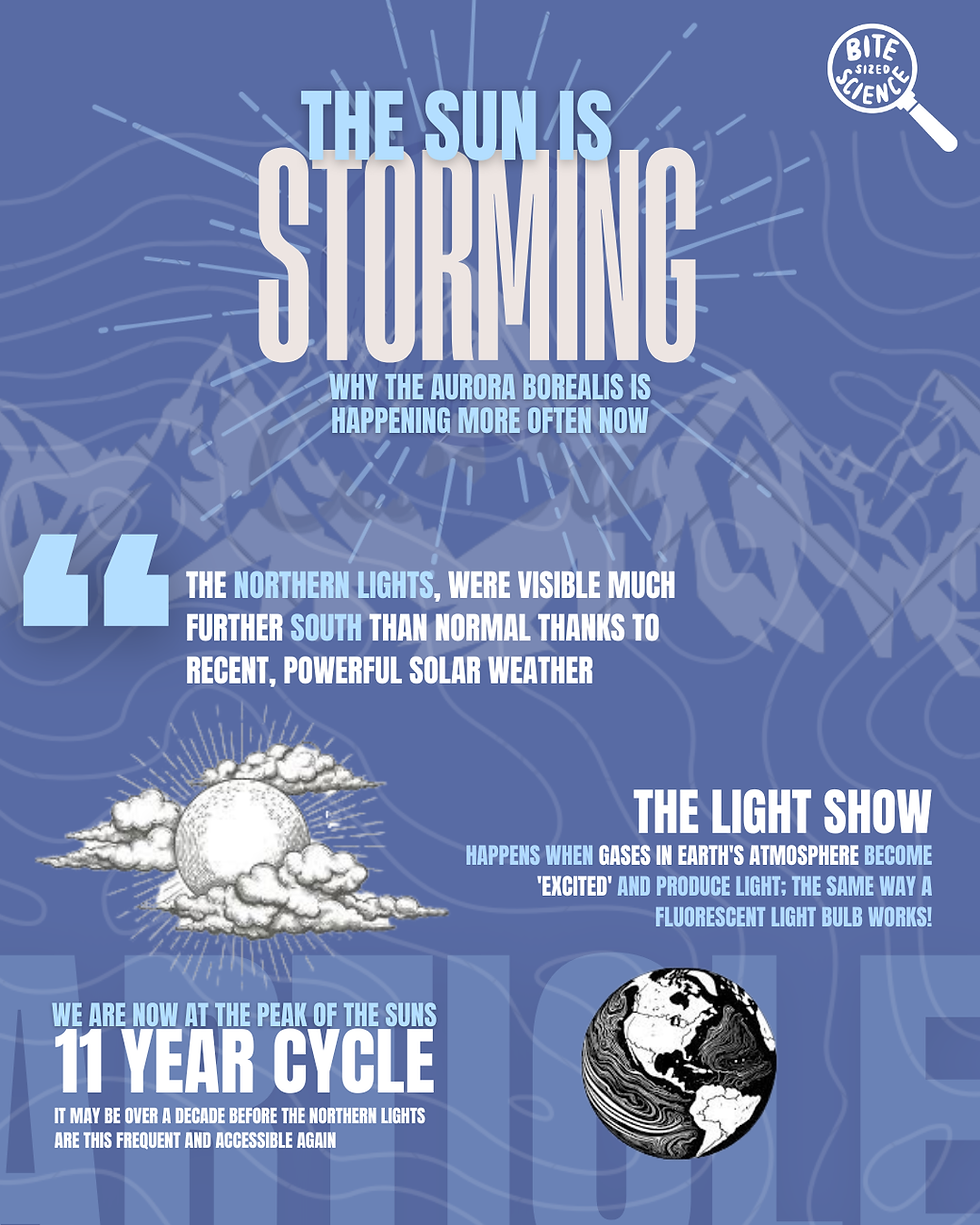COVID-19 Mythbusters and Baseline Information
- Bite Sized Science

- Nov 8, 2020
- 4 min read
Welcome back Bite-Sized scientists, we hope you’ve had an excellent start to the school year!
This week we’ll be continuing our series about COVID-19! There’s an enormous amount of articles about COVID-19 circulating on the internet, but it can be overwhelming to filter through and look for the most up-to-date and accurate information. Luckily, Bite-Sized Science is here to help you! In the previous weeks, we covered some of the biochemistry and possible COVID-19 treatment options currently under investigation. This week, we’ll be delving into COVID-19’s origins and go over some healthy pandemic practices. (Keep an eye throughout the article for mythbusters!)

MYTH: Hydroxychloroquine is a treatment for COVID-19.
FACT: While hydroxychloroquine is an effective treatment for malaria, studies show hydroxychloroquine does not reduce the number of deaths in COVID-19 hospitalised patients, nor does it help moderate other health effects of the virus (although more research on this topic is still needed required).
COVID-19’s full name is SARS-CoV-2. To many, this may sound like a jumble of letters and numbers, but let’s break it down into something a little more digestible. The first part of the name SARS is an acronym for Severe Acute Respiratory Syndrome, which is a viral respiratory illness caused by the coronavirus family of viruses. There are many coronaviruses out there, some of which, like the current new coronavirus COVID-19, cause disease in both humans and animals.
Scientists examined the genomic sequence of COVID-19 and found it to be comparable to that of a SARS-like virus found in bats. That’s right, COVID-19 is a zoonotic infection: an infection passed on from animals to humans (see how the prefix zoo- is associated with animals). COVID-19 is not the first virus to act like this, as all coronaviruses known to infect humans are zoonotic infections.The emergence of COVID-19 has been linked to a seafood market in Wuhan, Hubei Province, China. At this point in time, it is unknown whether this was the location where the virus was transmitted from animal to human for the first time.
So what do you need to know about COVID-19? COVID-19 is spread from person to person through respiratory droplets in the air—that is droplets from sneezing, coughing, saliva, etc.
COVID-19 is easily spread between people. Based on the information we have up to date, transmission of the virus happens mainly when the person is showing symptoms of the infection. However, an infected person can spread the virus to others even if they themselves are not showing symptoms, also known as being in an asymptomatic or presymptomatic state. COVID-19 can also be transmitted through objects if an infected person were to leave their droplets on the surface. For maximum protection, ensure that you wash your hands frequently for at least 20 seconds!
MYTH: Using an ultra-violet (UV) lamp is the best way to clean your hands and prevent infection.
FACT: Ultra-violet (UV) light can cause damage and irritation to your skin and therefore UV lamps should NOT be used to disinfect hands (visit our sunscreen series to learn more about the impact of UV radiation).
If you need to leave the house, it is highly recommended that you wear a face mask. Many cities have actually passed by-laws that require citizens to wear a face mask in indoor public spaces. Both fabric face masks and medical face masks can help protect you if worn appropriately. Here, we have outlined the correct steps needed to ensure proper face mask application:
Wash your hands for 30 seconds before touching the mask.
Check that there is no damage to the mask.
For medical masks, find the top part of the mask with the metal bar. The side with the bar becomes the top of the mask. Pinch the metal bar to fit the shape of your nose bridge.
Cover your nose, chin, and mouth and make sure there are no gaps on the side.
Avoid touching the mask when you’re wearing it.
To remove the mask, clean your hands and only touch the side straps when removing it from your face.
Wash fabric masks with soap and hot water and discard medical masks.
MYTH: You should wear a mask outside at all times, even when exercising.
FACT: People should NOT wear masks while exercising as it prevents your ability to breathe comfortably. However, physical distancing protocols should still be followed.
To see the current statistics on COVID-19, visit:
References
Coronavirus disease (COVID-19): How is it transmitted? [Internet]. [cited 2020 Oct 21]. Available from: https://www.who.int/news-room/q-a-detail/coronavirus-disease-covid-19-how-is-it-transmitted
Canada PHA of. Coronavirus disease (COVID-19): Symptoms and treatment [Internet]. aem. 2020 [cited 2020 Oct 21]. Available from: https://www.canada.ca/en/public-health/services/diseases/2019-novel-coronavirus-infection/symptoms.html
COVID-19 – What We Know So Far About… Zoonotic Origins. :6.
COVID-19 Mythbusters – World Health Organization [Internet]. [cited 2020 Nov 7]. Available from: https://www.who.int/emergencies/diseases/novel-coronavirus-2019/advice-for-public/myth-busters.
.Hu B, Zeng L-P, Yang X-L, Ge X-Y, Zhang W, Li B, et al. Discovery of a rich gene pool of bat SARS-related coronaviruses provides new insights into the origin of SARS coronavirus. PLOS Pathogens. 2017 Nov 30;13(11):e1006698.
7.Boni MF, Lemey P, Jiang X, Lam TT-Y, Perry BW, Castoe TA, et al. Evolutionary origins of the SARS-CoV-2 sarbecovirus lineage responsible for the COVID-19 pandemic. Nature Microbiology. 2020 Nov;5(11):1408–17.
8. masks-infographic---final-(web---rgb).png (2251×2251) [Internet]. [cited 2020 Oct 21]. Available from: https://www.who.int/images/default-source/health-topics/coronavirus/masks-infographic---final-(web---rgb).png?sfvrsn=c67232f0_17





Comments